Artist based in London and Zürich
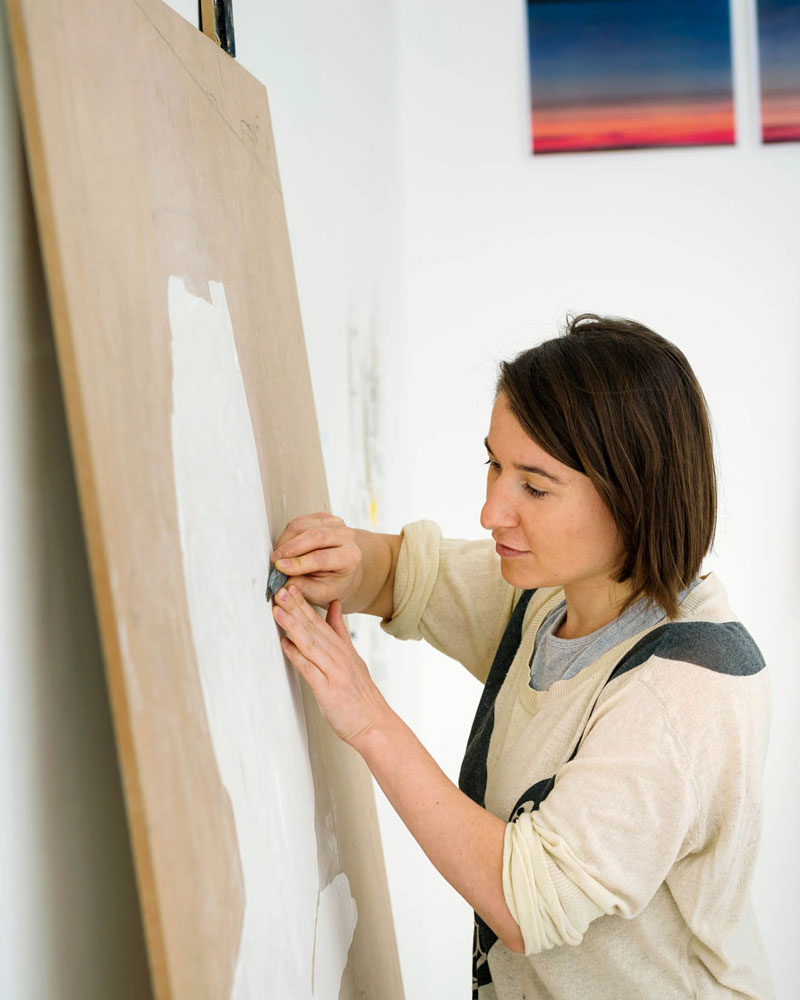
Bianca Barandun, Portrait of the Artist
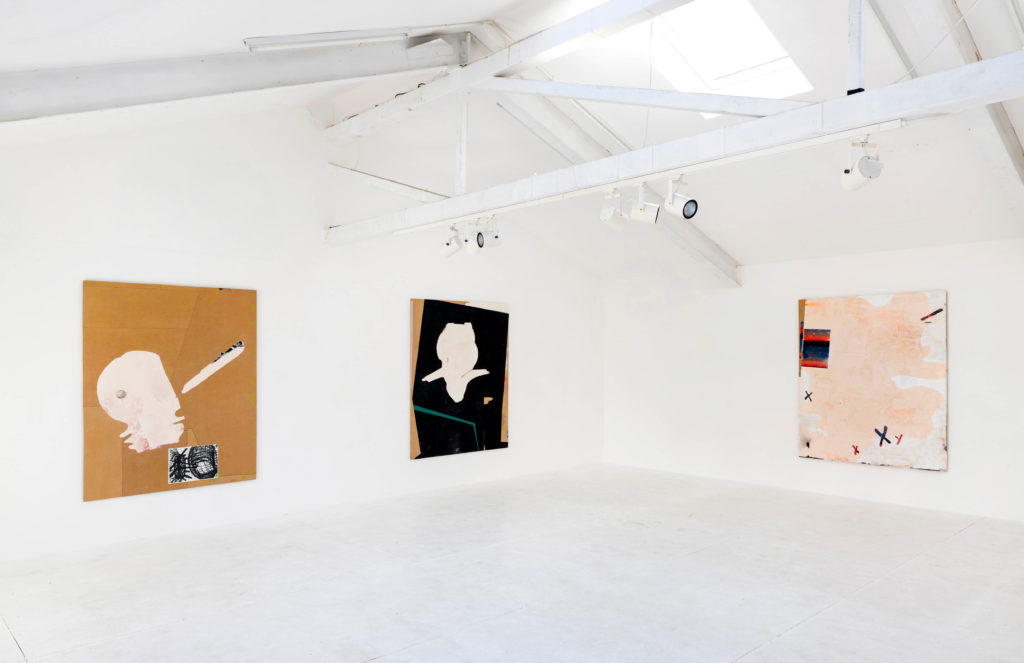
In Motion, Gravity and XXXY, 2018, install shot solo show, Line in Sand_Image Courtesy Unit 1 GalleryWorkshop
Tell us about yourself, what's your background?
Drawing always helped me to make sense and understand my environment, but it also transported me to a different world. It still functions as a major part of my practice and it is probably among the key reasons why I pursued a BA in Scientific Illustration at Zhdk Zürich Hochschule der Künste in Zürich, where I learned how to draw in a traditional setting. Two years into my Bachelor, I decided to gain a new perspective by initiating an exchange to study Illustration at the Hochschule für Angewandte Wissenschaften Hamburg, Germany, where I transferred and from where I received my Bachelor’s degree. Right after, I moved to London to study and received my MFA in Printmaking at the Royal College of Art in 2017. It was vital for me to study Printmaking, not because I regard myself as a traditional printmaker. It is more due to the reason I gain huge inspiration from the various processes of printmaking and hoped to incorporate this style into my own artistic work.
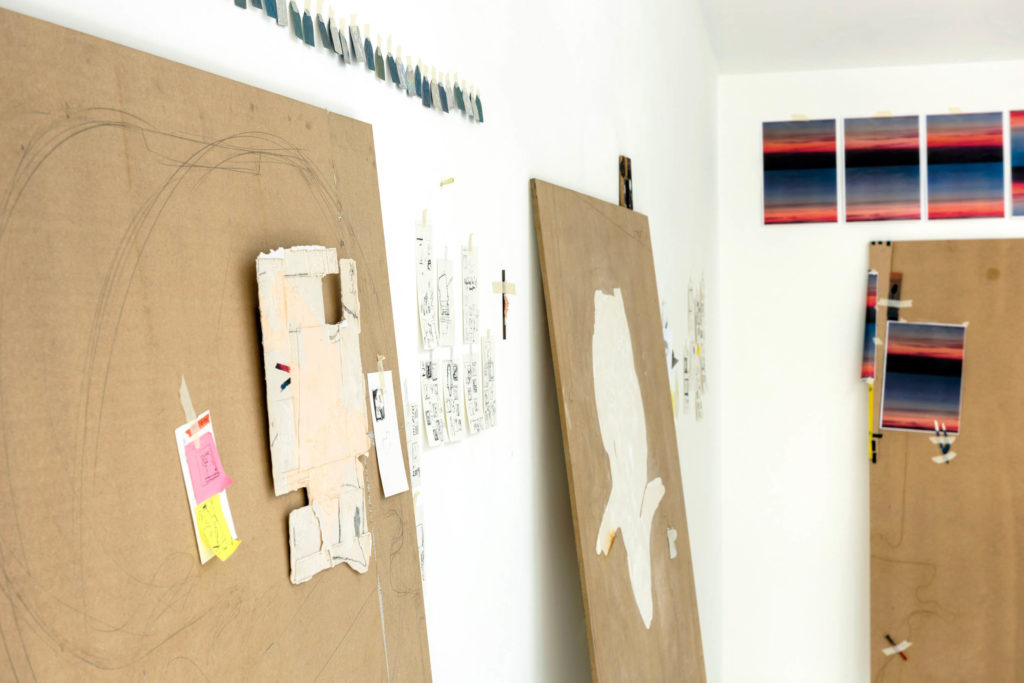
work in progress for solo show "Line in Sand", Image Courtesy Unit 1 Gallery_Workshop
"The core idea of my practice is rooted in interpreting and translating interpersonal relations into material metaphors. Through a variety of media, I try to create a visual suggestion of the complexity of society."
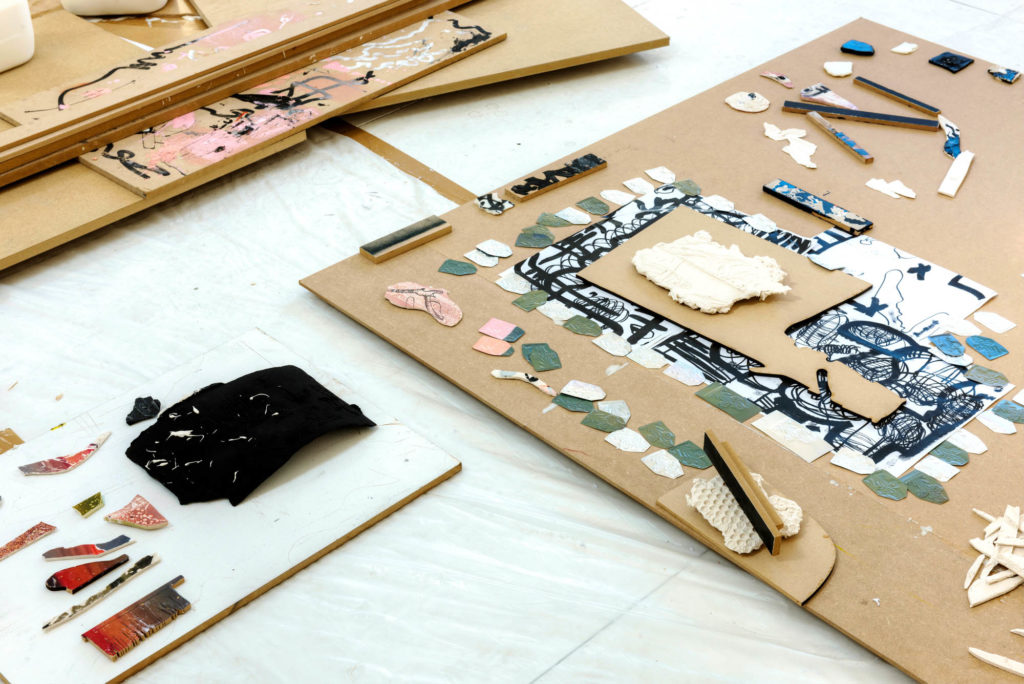
work in progress for solo show "Line in Sand", Image Courtesy Unit 1 Gallery_Workshop
What are you currently working on and where did the inspiration for it come from?
At the moment, I am working on the basis of the phenomenon of Hikikomori. After a conversation with a friend, I was immediately intrigued by this topic. Hikikomori is a Japanese term and means "pulling inward". It refers to the phenomenon and the affected themselves. Hikikomori describes a form of severe social withdrawal from society, ironically in the age of hypoconnectivity. It describes adolescents and young adults who seek isolation, who become recluses in their parents‘ homes, unable to attend school or go to work for months or years. Overstimulation, frustration, isolation and the pressure to perform and succeed professionally are among the key factors for the phenomenon of Hikikomori. Today there are an estimated million Japanese „modern-day hermits “. While this phenomenon originated in Japan, it is branching out to other countries as well. Often Hikikomori choose their bedroom as their escaping space, whereby these controlled spaces are being heavily equipped with digital devices, allowing for the affected to escape in a virtual space.
My intention is to create a form language which resonates with this phenomenon. It is important for me to not base my work on the Japanese Hikikomori culture. I am rather setting the focus on illustrating the analogies between this phenomenon and our everyday life. Especially during these times of social distancing, I wonder if we could learn something from the Hikikomori culture.
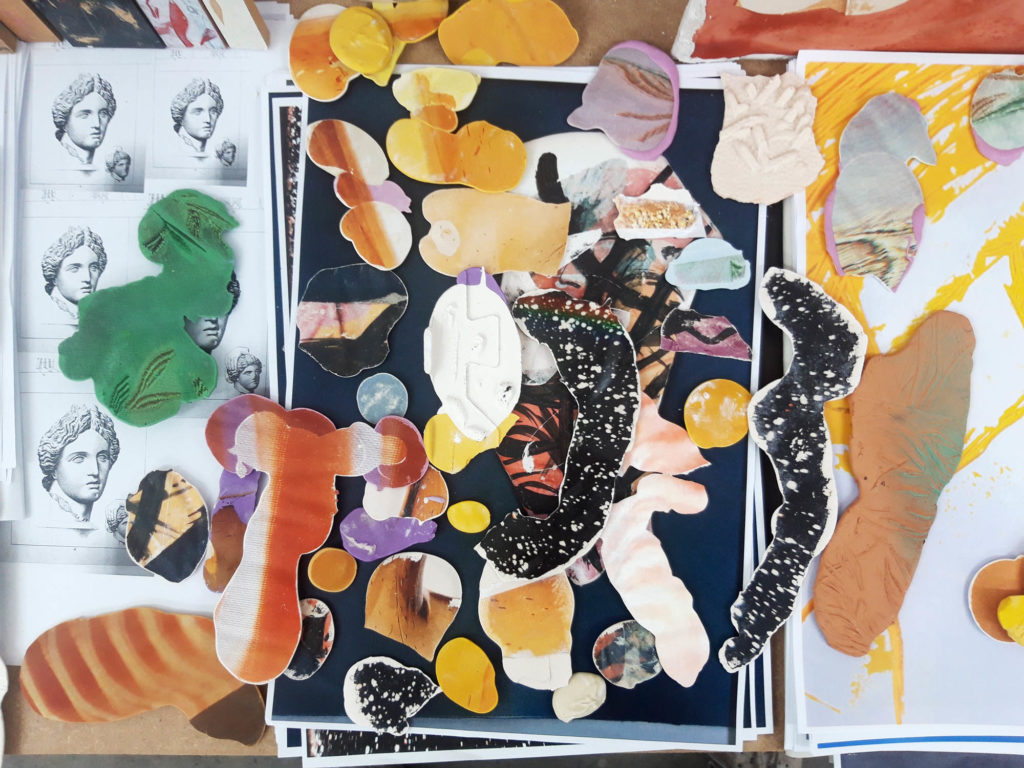
work in progress, testing material, for project Hikikomori
Innovation does not only happen in the field of technology — it occurs everyday in an artist's practice. What do you do for inspiration?
Walking helps me, both to organize my thoughts as well as to generate new ideas. Especially when I discover new parts of my surrounding where I have not been before. Mostly, I get stimulated by architecture, the proportion of buildings, their shapes, forms and surface textures. Additionally, I am really fascinated by sculptures or objects, basically everything which is 3D. This includes sculptures I pass by on the streets or in parks, objects I stumble upon in secondhand shops. Moreover, merely an image of a sculpture or an object can captivate me.
Quite often I also get a lot of input and ideas from being and talking with friends. However, I can say the core idea of my practice is rooted in interpreting and translating interpersonal relations into material metaphors. Through a variety of media, I try to create a visual suggestion of the complexity of society.
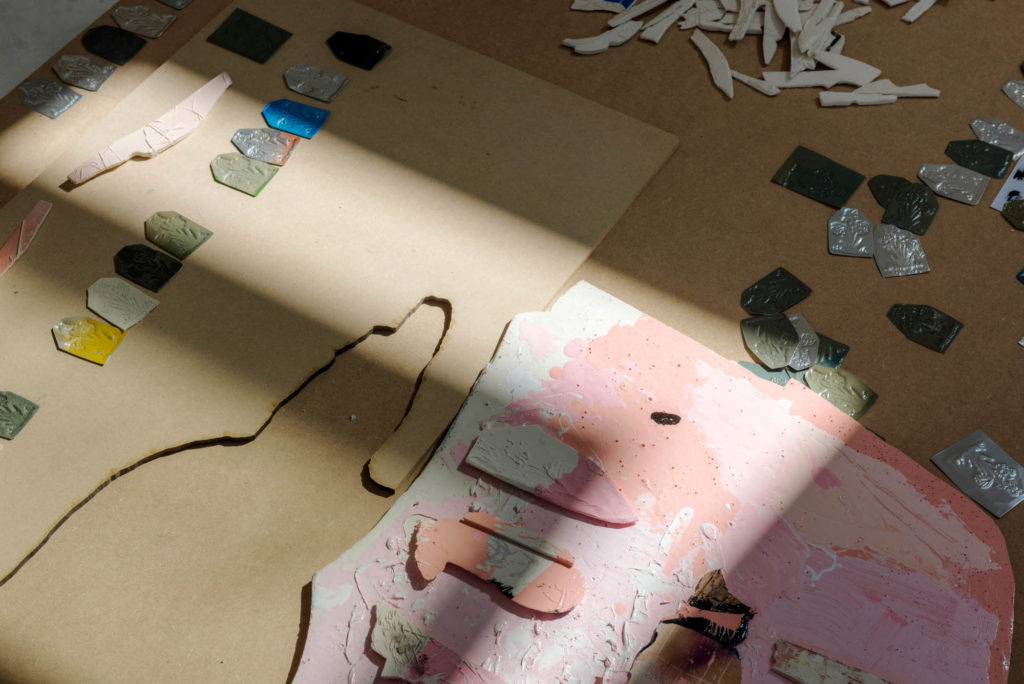
work in progress for solo show "Line in Sand", Image Courtesy Unit 1 Gallery_Workshop
Where do ideas start for you? In the studio or being in the world?
Shifting materials, discovering, experimenting and constantly learning about different materials and processes are a central part of my practice. My curiosity is a driving force and keeps me interested in creating work in the first place. I am fascinated by certain materials, their textures, weight, haptics or a particular surface. I am driven by my keenness to combine, challenge and discover new materials and ways of working with them. The more unknown a material or process is to me, the more I get drawn to it. I am captivated by what happens when I join or force two things together, when the material takes over and creates its own language. Thereby, it is a constant balance of when to direct and intervene, or when to let go. This phase of my work is very exciting, allowing for the unexpected and letting me to explore new things. This is really rewarding.
Mentioned combining and contrasting of different surfaces and the interplay between them, aligns with the core idea of my practice to illustrate the intricate and labyrinthine nature of human interaction within society. I use numerous types of media to create a visual suggestion of the complexities of society.
Therefore, I deliberately play with the incorporation of unfamiliar materials or techniques into my work in order to allow imperfections or errors to occur. As an example, I choose materials I have to work very quickly due to their very nature. For instance, when using plaster, I have to work fast due to its rapid drying process. This won`t allow me to intervene much nor go into details. The reason I like to work with these imperfections is that my main goal is to create work, which feels on the verge of finished and unfinished – controlled and uncontrolled - to create work which makes you feel something, where there is just something a little bit off or that has an underlying tension.
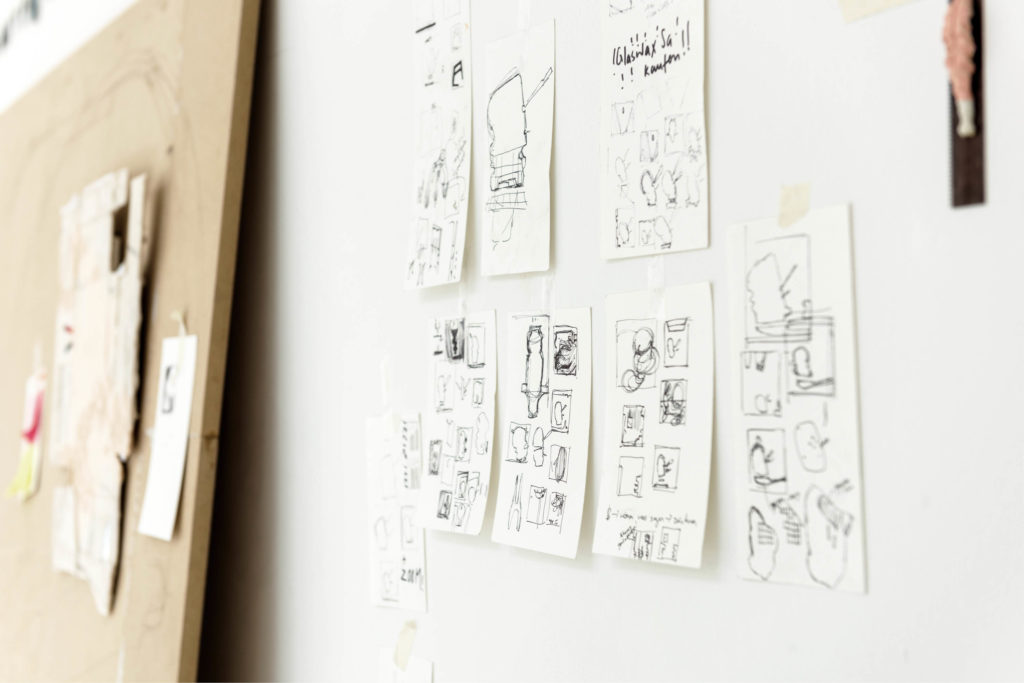
scenes from the artist's studio
How do you make your work? Where do you start and how does the process evolve?
As described, my practice stems from my experimental engagement with materials, though I do work in quite strict phases, starting with a rather extensive research stage. During this time, I simultaneously start to sketch and arrange numerous components in an almost scientific method. I try to illustrate an emotional discourse and displacement. At some point I need to get an overview of what I have accumulated, then I start to spread out all my sketches on the floor and the wall. I start to arrange groups and mark the important ones. All the papers I sketch on need to be the same size for the respective project I am working on during this time.
The studio shifts and changes with each phase. When I start to produce the actual work, I begin to lay out all the materials and tools quite meticulously on the floor. This might look chaotic, but it’s actually the opposite and it helps me to navigate through the space. In fact, I cannot start working before everything is laid out the way I need it to be. As a matter of fact, getting installed takes up way more time than the actual creation of the work. Finally, when everything is set in place, it allows me to even bounce quickly from one work to another. A friend of mine once described it as a performance itself.
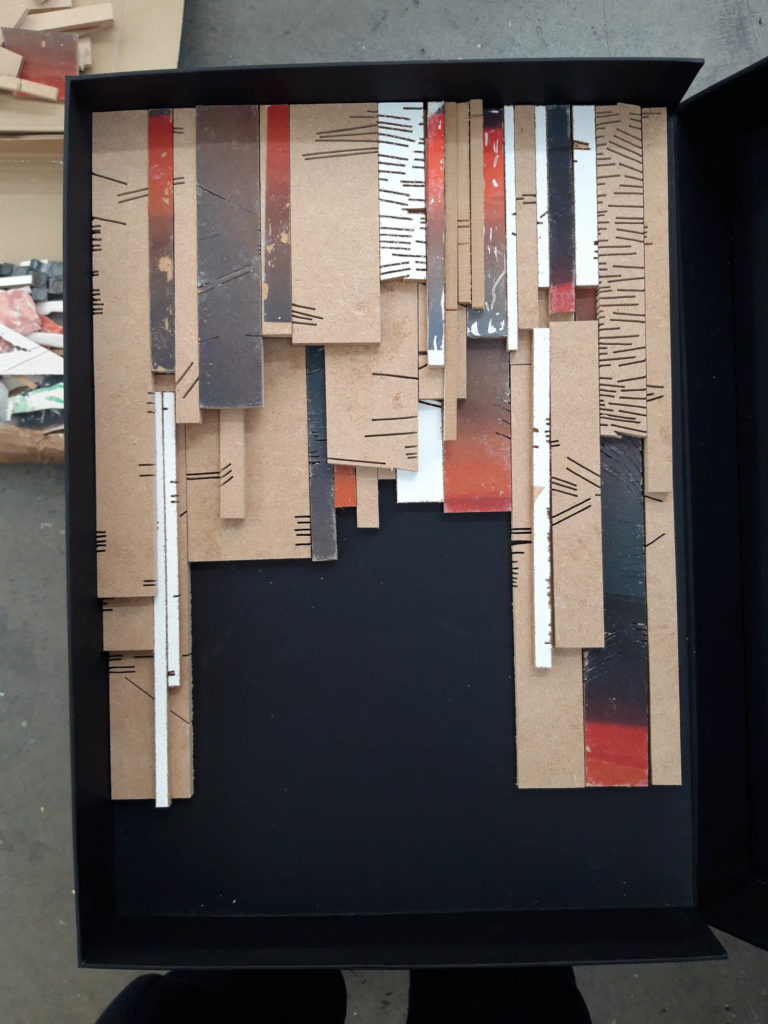
work in progress for solo show "Line in Sand", Image Courtesy Unit 1 Gallery_Workshop
Many artists live by their creative routines, do you have your own studio ritual? What does that look like for you?
I do not have a particular studio routine, besides that after arriving in the studio, I would check my mails and overlook what I have created the day or days before, all whilst sipping on a cafe. It rather depends on the phase my project is in. In general, I can say that I prefer to work at night, when everything is dark and calm and the level of distraction declines. That is when I can focus the best.
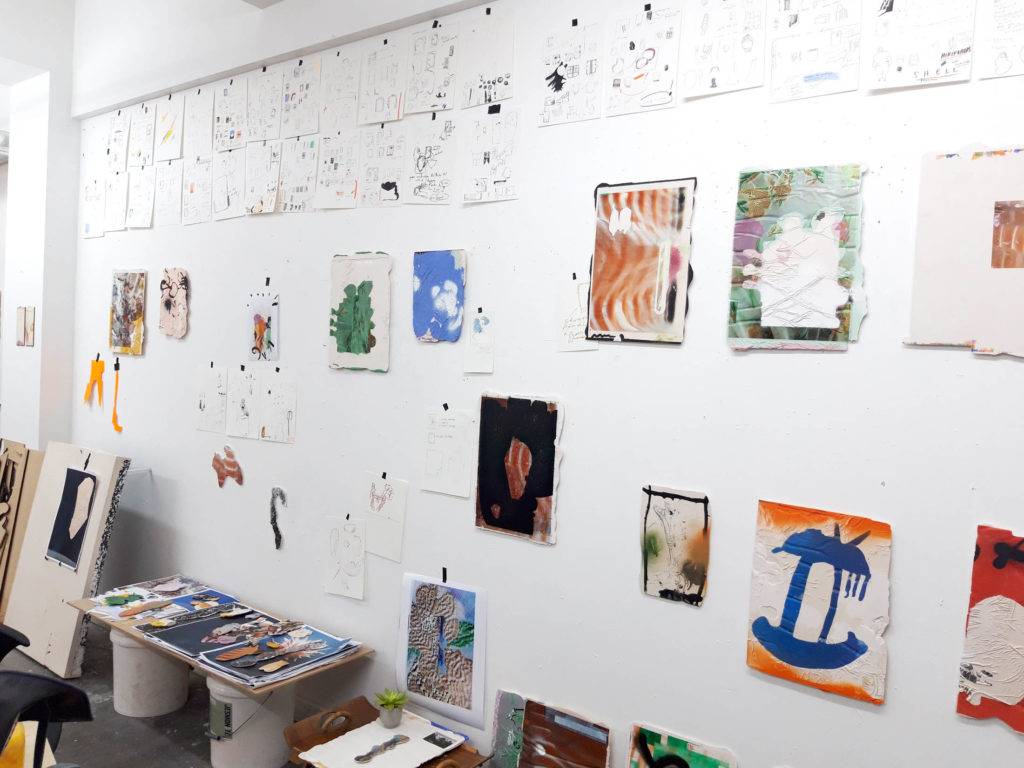
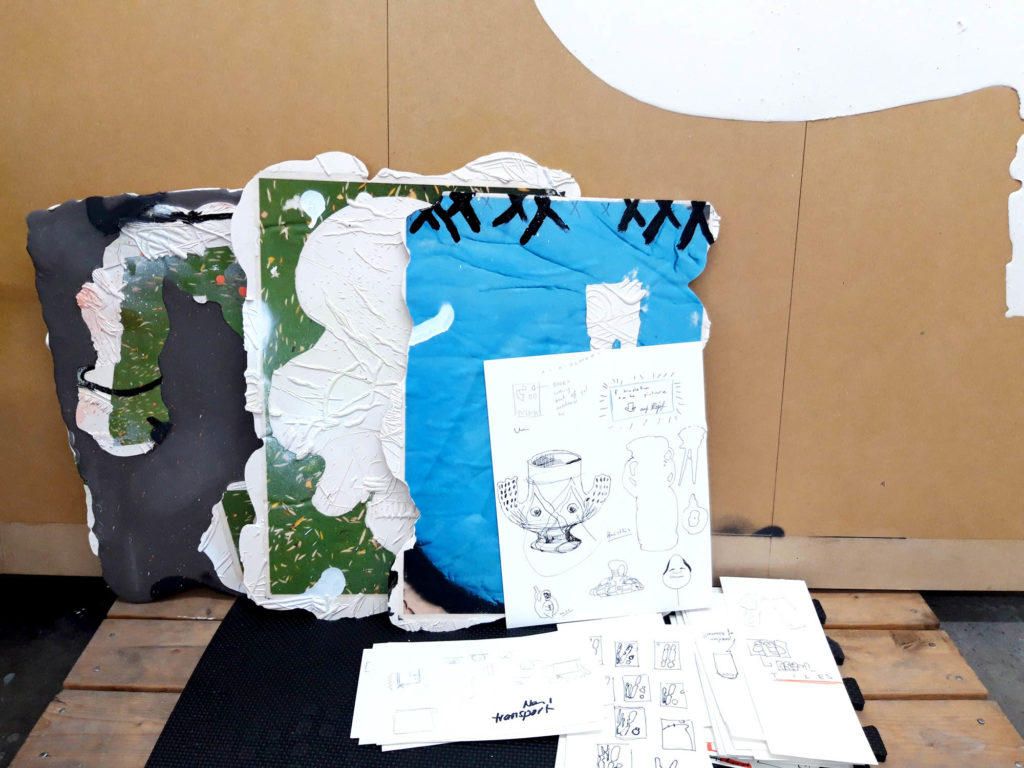
scenes from the artist's studio
Who are your biggest influences?
I am fascinated by Isa Genzken’s work. The visionary aspect in her work and the vast variety in which she expresses her thoughts are captivating me. I also admire Ida Ekblad’s bold work, or the craziness and anger transported in Hyon Gyon’s work.
When I look at these artists, they evoke my urge and joy to make and create. Overall, the artists I draw inspiration from are often not particularly connected or integral to my own work. It is rather their energy, their joy of making, their rage and anger.

11.01.19. & 16.01.19. 2019, mixed media, 42 x 64cm
Are there books or films that are an important source of inspiration?
I draw inspiration from a wide range of sources, from books, newspaper articles, or also often on google expeditions, from films or music videos. Hence, my latest body of work on photo paper is profoundly influenced by Kassia St Clair’s book ‘The Secret Lives of Colour’, an ode to colour, with its complex historical insights and curious tales. Another book that still keeps me engaged is ‘Rage Becomes Her: The Power of Women’s Anger’ by Soraya Chemaly. It thematizes the justification of women’s anger and its necessity as well as its societal and cultural implications.
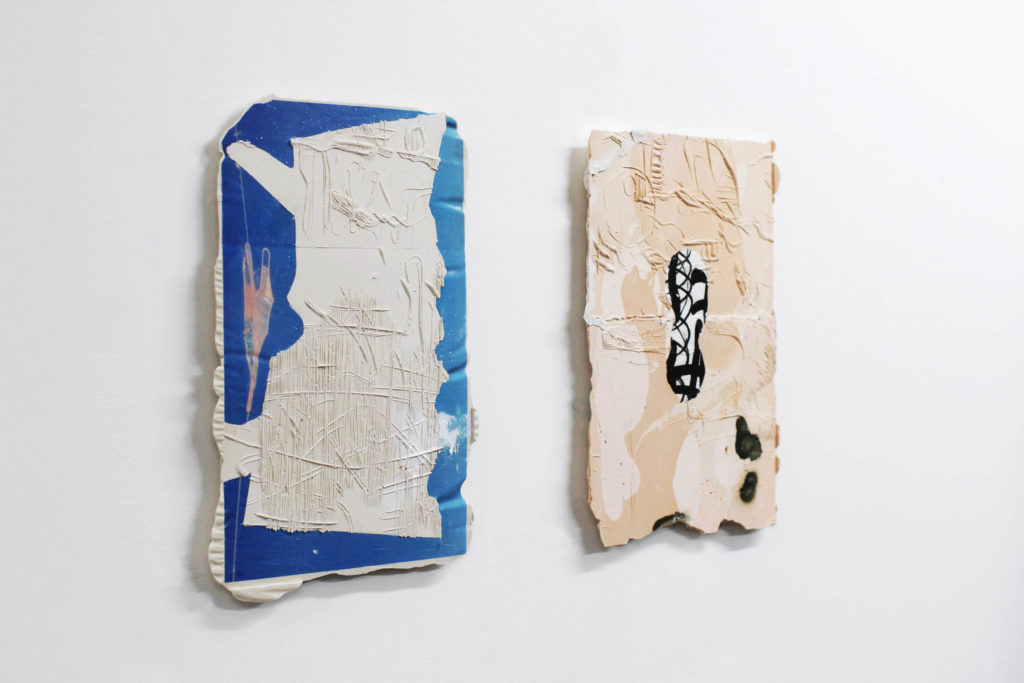
08.10.18. and 01.10.18. 2018, jesmonite, spray paint, varnish, each 42 x 29.7 cm
How will Innovate Grant contribute to your practice?
The Innovate Grant helps to continue my research and expand my practice and I am profoundly grateful for that. I am constantly seeking out new ways of working and incorporating new materials into my practice. Recently I started working with canvas and textile and I am getting completely immersed in it. Hence, I can make great use of this support and want to thank the whole Innovate Grant Team for this.

scenes from the artist's studio
What’s the best piece of advice you’ve been given?
Whilst studying Scientific Illustration a lecturer told me: ‘There is a lot of chaos in your head and in your hand. You need to sort out the one in your head whilst keeping the chaos in your hand.’
I quite like that comment and it really stuck with me.
What is the best advice you would give to other artists?
Trust your hand.
View Bianca Barandun's Portfolio
Stay up to date with Bianca Barandun
Instagram @bianca.barandun
www.bianca-barandun.com